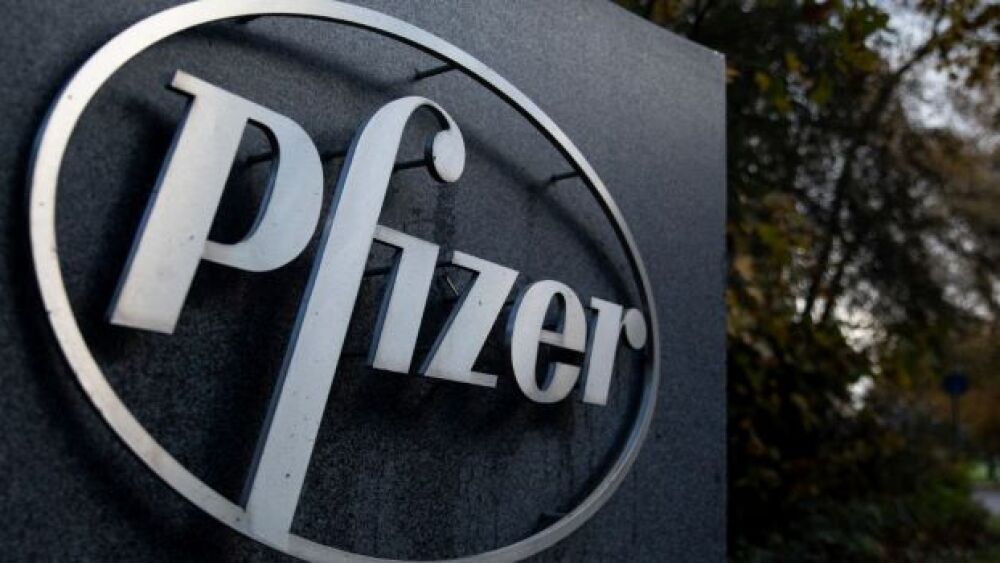Around 40% of Pfizer’s portfolio was realized through partnerships, and Monday, the pharma giant announced three more collaborative deals.
Dan Kitwood/Getty Images
The COVID-19 pandemic has brought to light the incredible power of collaboration in the life science industry. Together, we get more done. Around 40% of Pfizer’s portfolio was realized through partnerships, and Monday, the pharma giant announced three more collaborative deals.
Pfizer’s current spotlight, of course, is from its mRNA vaccine in the fight against the novel coronavirus. Developed in collaboration with Germany’s BioNTech, Comirnaty was the very first COVID-19 vaccine approved by the FDA.
The Pfizer-BioNTech vaccine already uses Acuitas Therapeutics’ lipid nanoparticle technology. With a new agreement struck between the companies, Pfizer will “harness the power of the mRNA-LNP technology and deliver potential new breakthrough vaccines and therapeutics that address significant unmet needs for patients,” CSO and President of Worldwide R&D Mikael Dolsten said. The company plans to explore more projects in its existing vaccine areas and expand to new areas using the tech.
Acuitas won’t be the only partner propelling the giant’s vaccine pipeline. Pfizer also signed a multi-year collaboration and licensing agreement with Codex DNA for its enzymatic DNA synthesis (EDS) technology. The novel tech will be used in R&D efforts for mRNA-based (you guessed it) vaccines and biotherapies.
Codex’s EDS technology makes the construction of synthetic DNA, RNA, and proteins more sustainable, scalable, and cost-effective by significantly reducing the timeline for vaccine development and biologic drug discovery. The genes produced can test the antigenicity of disease variants, making R&D more efficient by targeting the right candidates.
The deal lands Codex DNA with undisclosed upfront payment in addition to milestones payments, potentially in excess of $100 million based on the licensed products being commercialized.
Historically, Pfizer played a pivotal role in eradicating polio and smallpox. Current programs focus on preventing pneumococcal disease, influenza, RSV, Lyme disease, and more childhood, adolescent, and adult infections. The company shows 17 vaccine projects in the pipeline.
Vaccines, once thought of as the red-headed stepchild compared to more lucrative drugs that require daily doses, have shot up in recent years with a few blockbuster vaccines like the one administered to prevent HPV. COVID-19 has swung the numbers wildly to the other side, with Pfizer expecting to make nearly as much from its vaccines in 2021 as it earned in total in 2020. Indeed, vaccines have become a lucrative industry, thanks to a global pandemic.
Pfizer’s third collaboration announcement was for the benefit of those living with rare genetic diseases of the liver, muscle, and CNS. Beam Therapeutics is cashing in on $300 million upfront, with up to $1.05 billion down the line from potential milestone payments.
Beam utilizes base editing for precision genetic medicine development. Its in vivo technology uses mRNA and LNP to deliver gene editors directly to the targeted organs. Instead of creating double-stranded breaks in the DNA like traditional gene-editing methods (i.e., cut and insert), Beam’s medicines target a single base in the genome without making a double-stranded break in the DNA.
Clearly, Comirnaty has made Pfizer a big believer in the power of mRNA and LNP technologies. Applying them to both vaccine development and gene-editing medicines, it remains to be seen what world-changing drugs may stem from these partnerships.
Featured Jobs on BioSpace






